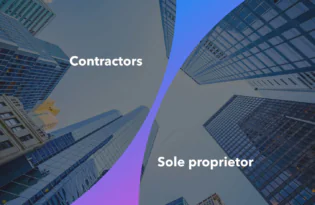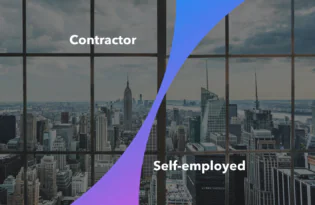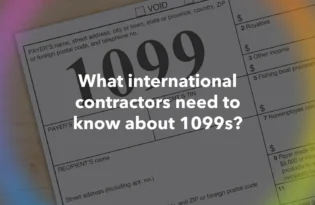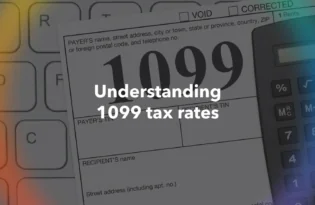Employee misclassification lawsuits & penalties
Need some help understanding employee misclassification lawsuits and penalties? We’ve got your guide right here.

Employee misclassification is the act of improperly labeling the status of a worker for tax purposes. It is a common but significant issue for business owners.
This is especially true for business owners looking to expand their teams across borders, as international hiring pertains to a larger discussion concerning local jurisdictions and labor laws.
With this in mind, the following article explores employee misclassification lawsuits and penalties in 2025, including the various types of worker misclassification violations, standout lawsuits, and advice on how business owners can avoid them.
Types of Employee Misclassification
The following table provides a breakdown of the five most common types of employee misclassification.
Employee Misclassification Types and Penalties
| Type | Description |
|---|---|
| Contractor vs. Employee | Treating someone who meets the economic reality or control tests as a 1099 contractor rather than a W-2 employee. |
| Joint-Employer Misclassification | Failing to recognize that two businesses (e.g. staffing agency + host company) both effectively control and employ the worker. |
| FLSA Overtime Exemption Status | Labeling a worker as salaried/exempt (no overtime) when their duties or pay level don’t meet the exemption criteria. |
| Government Contractor Errors | On public projects, misclassifying workers to evade Davis-Bacon or prevailing-wage requirements. |
| International/Remote Misclassification | Treating an overseas hire as a contractor without assessing local employment law and withholding obligations. |
The most common types of misclassification are labeling a contractor as an employee (or vice versa) and overtime misclassification, both of which take up approximately 50% of FLSA filings.
The remaining 50% is split amongst the remaining types on this list, as well as five additional types of misclassification, which contribute a negligible amount to total counts, both in quantity and severity.
Employee misclassification lawsuits & penalties: Examples
The vast majority of employee misclassification lawsuits play out on an individual basis.
These lawsuits follow a repeated process:
- The employee files a demand letter or a wage-hour division investigation referral with the DOL
- The complaint is then filed in federal court via the FLSA
- The court determines whether the complaint can proceed as a collective/class action
- Parties exchange depositions and related documents
- The trial begins
This process does change a bit, however, when looking at international cases.
International Employee Classification
Employee misclassification lawsuits and penalties vary significantly across the world. Depending on where you are hiring, business owners can expect varying levels of fines and liabilities, including jeopardizing the intellectual property (IP) rights for work completed and being banned from hiring in the country.
The following table categorizes several countries’ employee misclassification penalties.
Employee Misclassification Globally
| Country | Is the Employer Liable For… | |||
| Back Taxes? | Benefits? | IP rights? | Hiring Ban? | |
| France | ✅ | ✅ | ✅ | ✅ |
| Germany | ✅ | ✅ | ✅ | ❌ |
| UK | ✅ | ✅ | Sometimes | ✅ |
| US | ✅ | ✅ | Sometimes | ❌ |
| Philippines | ✅ | ✅ | Sometimes | Sometimes |
| India | ✅ | ✅ | Sometimes | ❌ |
| Mexico | ✅ | ✅ | ❌ | ❌ |
| Netherlands | Sometimes | ❌ | Rarely | Sometimes |
| Ireland | ✅ | ❌ | Rarely | ❌ |
| Czech Republic | Rarely | Rarely | Rarely | ❌ |
| Hungary | ✅ | Sometimes | Rarely | ❌ |
Business owners considering hiring within these or other countries should keep a close eye on the labor practices within. Consult the country’s local tax authority or department of labor site for primary sources, or consult comprehensive country guides from reputable employer of record (EOR) or Workforce Management platforms for an easier overview.
How to mitigate employee misclassification lawsuits & penalties
Understanding how employee misclassification lawsuits and penalties work is important, but business owners should prioritize a more proactive approach. To begin, business owners should:
- Follow DOL, IRS, and state labor board updates
- Join industry associations (e.g., National Association of Professional Employer Organizations)
- Define project scopes
Beyond these fundamentals, there are several high-level processes that can foster protections against employee misclassification. These include:
Employee Misclassification Protections
| Protection | Cost | Labor |
|---|---|---|
| Classification Processes | Low | Yes |
| Internal Audits | Low-Medium | Yes |
| Working with an Employer of Record (EOR) | Medium | No |
| Staffing Agencies | Medium | No |
| Internal Staffing | High | Yes |
Several of these options can be combined for a more effective classification architecture. For example, refining your classification processes can take place before internal audits to meet expectations. Other options, such as working with an EOR, offer support to handle the process on your behalf, providing the most straightforward option.
Contractors vs Employees
One of the most important employee misclassification types is incorrectly labeling an employee as a contractor or vice versa. A more comprehensive guide to this distinction can be found by using the IRS 20-Point checklist, but a brief description breaks down like this:
International Contractor vs Employee: A Primer
| Contractor | Employee | |
|---|---|---|
| Control | The contractor determines where and how the work is completed | The employer determines where and how the work is completed |
| Training | No training is provided | The employer provides necessary training to complete the work |
| Profit/Loss | A contractor cannot make a profit or incur a loss from the project | An employee cannot make a profit or incur a loss from the project |
| Payment | Payment is project-based, typically in milestones. Paid via invoice | Payment is hourly or salaried, paid via check or direct deposit |
| Tools & Materials | The contractor provides any tools and materials to perform the work | The employer provides any tools and materials to perform the work |
Business owners who are still unsure how their workers might be classified can file Form SS-8 with the IRS to request direct assistance in deciding.
Navigating employee misclassification lawsuits
The reality is that employee misclassification lawsuits are more common than you might think, and easier to fall into than most business owners give them credit for. Even HR reps with decades of experience make these mistakes, and the complexities of international hiring require an even more seasoned hand.
That’s why many business owners choose to outsource the responsibilities of employee classification to an experienced partner.
Payoneer workforce management offers employer of record (EOR) and agent of record (AOR) tools for companies expanding their teams globally, not only removing the need to set up a local entity but streamlining processes for hiring and management along the way.
If you want to discuss how we can help you mitigate employee misclassification risks, reach out to us here.
Disclaimer
- Skuad Pte Limited (a Payoneer group company) and its affiliates & subsidiaries provide EoR, AoR, and contractor management services.
- The information in this article/on this page is intended for marketing and informational purposes only and does not constitute legal, financial, tax, or professional advice in any context. Payoneer and Payoneer Workforce Management are not liable for the accuracy, or reliability of the information provided herein. Any opinions expressed are those of the individual author and may not reflect the views of Payoneer or Payoneer Workforce Management. All representations and warranties regarding the information presented are disclaimed. The information in this article/on this page reflects the details available at the time of publication. For the most up-to-date information, please consult a Payoneer Workforce Management representative or account executive.
- Availability of cards and other products is subject to customer’s eligibility. Not all products are available in all jurisdictions in the same manner. Nothing herein should be understood as solicitation outside the jurisdiction where Payoneer Inc. or its affiliates is licensed to engage in payment services, unless permitted by applicable laws. Depending on or your eligibility, you may be offered the Corporate Purchasing Mastercard, issued by First Century Bank, N.A., under a license by Mastercard® and provided to you by Payoneer Inc., or the Payoneer Business Premium Debit Mastercard®, issued and provided from Ireland by Payoneer Europe Limited under a license by Mastercard®.
Related resources
Latest articles
-
How to hire employees in Australia
Looking to hire employees in Australia for your US company? Learn about employment in Australia and how Payoneer Workforce Management makes it easy to hire in Australia.
-
Planning to hire employees in Germany? Here’s a quick guide
Are you looking to hire employees in Germany? Learn about hiring in Germany and how Payoneer Workforce Management can help U.S. companies hiring in Germany.
-
Planning to hire employees in the Philippines? Here’s a quick guide
Wondering how an American company hires employees in the Philippines? Our guide covers how to hire employees in the Philippines and how we can help.
-
Planning to hire employees in Japan? Here’s a quick guide
Looking to hire employees in Japan for your U.S. company? Learn about hiring practices in Japan and how Payoneer Workforce Management makes it easy to hire in Japan.
-
Planning to hire in Hong Kong? Here’s a quick guide
Are you hiring employees in Hong Kong for your U.S. company? Learn about employment in Hong Kong and how Payoneer Workforce Management makes it easy to hire in Hong Kong.
-
Planning to hire in Colombia? Here’s a quick guide
Looking to hire employees in Colombia for your U.S. company? Learn about employment in Colombia and how Payoneer Workforce Management makes it easy to hire in Colombia.
















